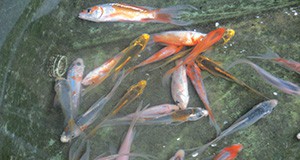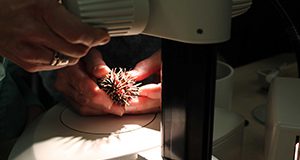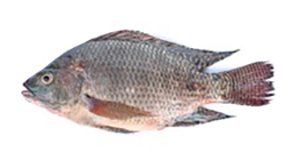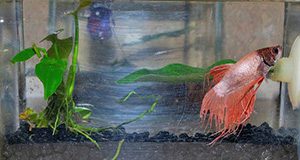This 55-page document contains a wealth of information on the long-spined sea urchin, which is an important animal in coral reef ecosystems. The publication discusses diagnostic methods for Diadema antillarum and provides reporting forms for laboratory and diagnostic work. Written by Ruth Francis-Floyd, Jan Landsberg, Roy Yanong, Yasu Kiryu, Shirley Baker, Deborah Pouder, William Sharp, Gabriel Delgado, Nicole Stacy, Tom Waltzek, Heather Walden, Roxanna Smolowitz, and Greg Beck, and published by the UF/IFAS Veterinary Medicine—Large Animal Clinical Sciences Department, May 2020.
https://edis.ifas.ufl.edu/vm244
Tag: Roy Yanong
Tilapia Lake Virus (TiLV): a Globally Emerging Threat to Tilapia Aquaculture
Tilapia lake virus is a globally emerging virus responsible for episodes of mass mortality in cultured and/or feral tilapia (Oreochromis spp. and hybrids) in Asia, Africa, Central America, and South America. Since 2014, there have been global reports of TiLV disease resulting in 10% to 90% mortality in tilapia fry, juveniles, and adults causing significant economic losses. Currently, the disease has been confirmed in Colombia, Ecuador, Egypt, India, Indonesia, Israel, Malaysia, Mexico, Philippines, Peru, Tanzania, and Thailand. TiLV has not yet been found in the USA or Canada, but it has most recently been reported in 20 aquaculture production facilities across six Mexican states (Chiapas, Jalisco, Michoacán, Sinaloa, Tabasco and Veracruz). This 7-page fact sheet written by Lowia Al-Hussinee, Kuttichantran Subramaniam, Win Surachetpong, Vsevolod Popov, Kathleen Hartman, Katharine Starzel, Roy Yanong, Craig Watson, Hugh Ferguson, Salvatore Frasca Jr., and Thomas Waltzek and published by the UF/IFAS School of Forest Resources and Conservation, Program in Fisheries and Aquatic Sciences describes this important emerging disease and explains how to prevent outbreaks and what to do if you suspect TiLV in an aquaculture facility or in the wild.
http://edis.ifas.ufl.edu/fa213
Evolution, culture, and care for Betta splendens
The commercial betta, or Siamese fighting fish (Betta splendens), is one of a group of fishes that live in fresh water in Africa and southern Asia. Today’s commercial bettas are selected for bright colors as well as elaborate fins because the ornamental hobby is the main market for this species. This 5-page fact sheet written by Craig Watson, Matthew DiMaggio, Jeffrey Hill, Quenton Tuckett, and Roy Yanong and published by School of Forest Resources and Conservation, Program in Fisheries and Aquatic Sciences explains how to grow and care for these beautiful and fascinating fishes.
http://edis.ifas.ufl.edu/fa212
Carp Edema Virus Disease (CEVD) / Koi Sleepy Disease (KSD)

Carp edema virus disease is killing wild and cultured varieties of carp and worrying koi enthusiasts and carp aquaculturists in the United States and around the world. The disease causes skin lesions and swelling and is sometimes called “koi sleepy disease” because infected fish become lethargic and unresponsive. This 5-page fact sheet describes symptoms, diagnosis, prevention, and what fish producers, wholesalers, or retailers can do if they suspect carp may have contracted the disease. Written by Shohreh Hesami, Pedro Viadanna, Natalie Steckler. Staci Spears, Patrick Thompson, Karen Kelley, Roy Yanong, Ruth Francis-Floyd, Johnny Shelley, Joseph Groff, Andy Goodwin, Olga Haenen, and Thomas Waltzek, and published by the School of Forest Resources and Conservation Program in Fisheries and Aquatic Sciences.
http://edis.ifas.ufl.edu/fa189


